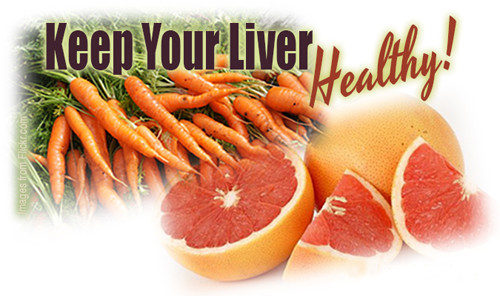
The liver is one of your largest organs both in its size, and its importance. Nestled below and to the right of your rib-cage, your liver plays a dual purpose iny our body: it both absorbs healthy nutrients into the body, and removes harmful toxins.
Looking after your liver is therefore really important. A poorly performing liver can result in malnutrition, or a build-up of nasty toxins. If your liver is damaged, you could experience any one or several nasty and painful ailments.
You’d be surprised at how many people suffer sluggish, underperforming or damaged livers: one in three of us suffers this ailment. However, all is not lost! Your liver can repair itself, with a little help from a healthy lifestyle – and this article explores how.
Contents
Causes of a poorly performing or damaged liver
Whilst some people are prone to liver problems, whether through genetics or ailments including diabetes and cancer; the liver can become damaged when exposed to certain viruses and toxins. For instance hepatitis harms the liver, meaning people who come into contact with others’ blood or bodily fluids; or expose their own to toxins, for instance through tattoos or body piercings, are at higher risk of absorbing hepatitis and harmful toxins.
However, some of the highest risk-factors of liver damage don’t relate to disease: they relate to what we consume. Excess alcohol consumption and internal body fat, which can coat your liver, are two of the biggest causes of liver damage. Even many pharmaceuticals damage our liver, as our body views them as foreign bodies and our livers kick into action to filter them out.
Debilitating effects of a damaged liver
A damaged or under-performing liver can impact your whole body. The most famous feature of liver damage is jaundice, patches of dark ‘liver spots’ on the skin and yellowing around the eyes. It can also cause a painful and inflamed abdominal area around your liver; nausea and a loss of appetite, often alongside paler stools and darker urine; and a drop in energy levels or even chronic fatigue. Sadly, for young men in America, liver cirrhosis from alcoholism is the fourth leading cause of death.
Holistically healing liver damage
After sifting through the variety of ways to heal your liver, we’ve selected three lifestyle changes for healing damaged livers. Let’s start with the most important first: remove alcohol and artificial chemicals from your diet.
Avocados, Carrots, tomatoes, grapefruit and spinach are all rich in Glutathione, a protein that helps detoxify the liver by stimulating enzymes to aid its operations.
Lemons and Limes both contain vast volumes of vitamin C, helping stimulate your liver’s own detoxification process and boosting your immune system.
Cruciferous vegetables including cabbage, cauliflower and Brussels sprouts are another approach to stimulating your liver’s detoxifying enzymes and it also helps flush out toxins.
When considering spices, don’t overlook turmeric: it helps assist our livers enzymes in clearing out unwanted chemicals.
Most nuts are a good source of glutathione, omega-3 fatty acids and amino acid arginine, helping support your liver’s cleansing actions, especially ammonia.
The naturally occurring chemical pectin props up your liver when its being overloaded. One of the greatest sources you can add to your grocery list is apples. Perhaps this is where the expression “an apple a day keeps the doctor at bay” comes from?
Garlic, known for boosting our immune systems, is also great for naturally healing livers. It’s packed full of sulfur for activating enzymes in your liver to flush out unwanted toxins. It also harbours allicin and selenium, natural chemical to help cleanse your liver.
Milk thistle has been used in healing damaged livers for over two millennia. It is thought this ancient healing herb protects against liver damage, thanks to its high levels of antioxidants and flavonoids, silymarin and silybin. You can get milk thistle supplements from all good health food shops.
Here’s a video that shows you more natural foods that can help heal your liver:
